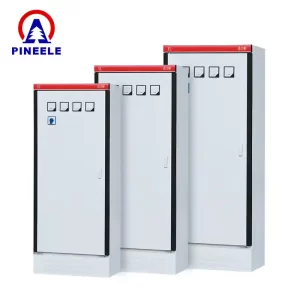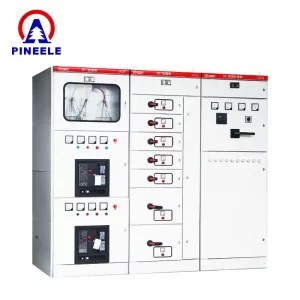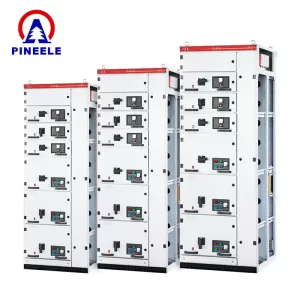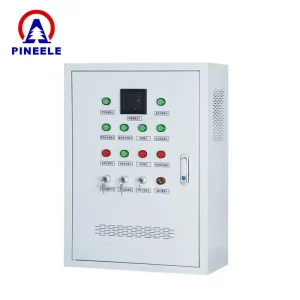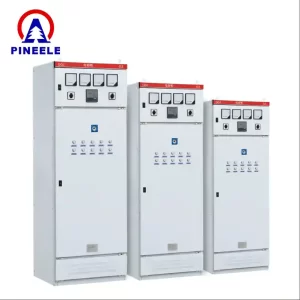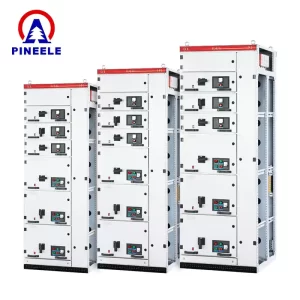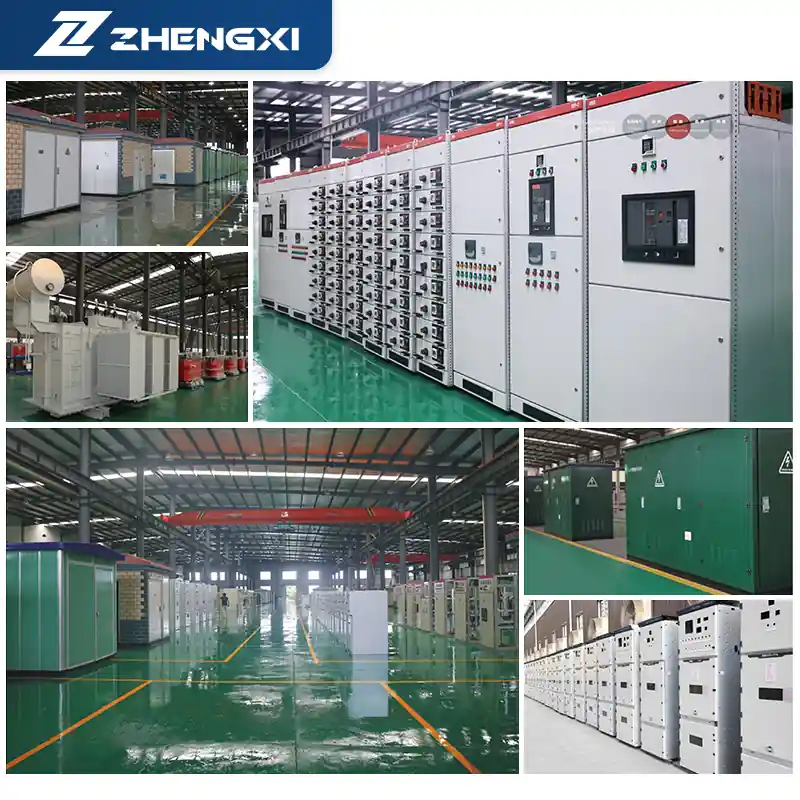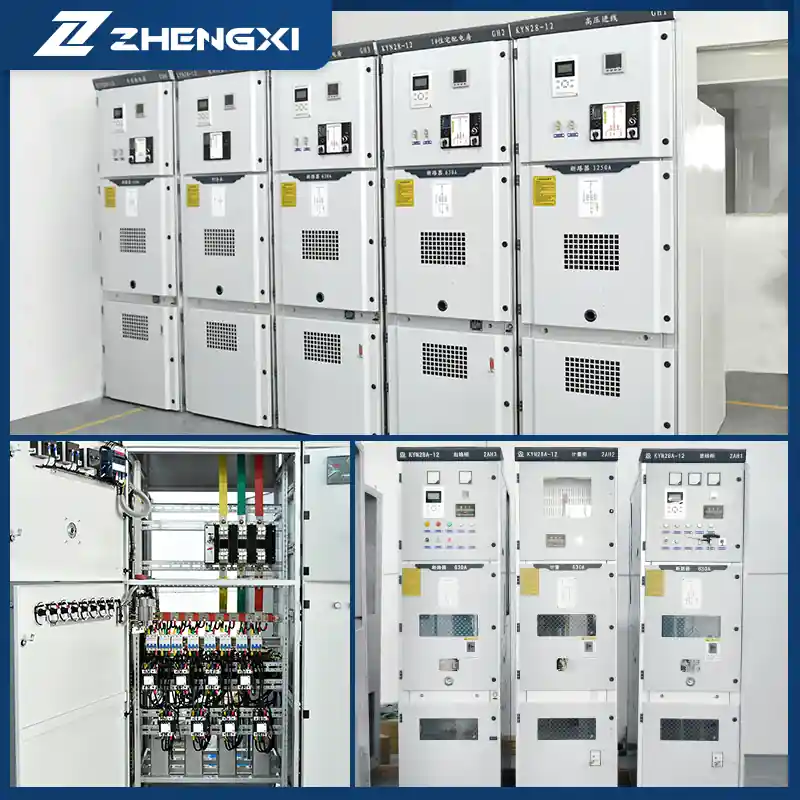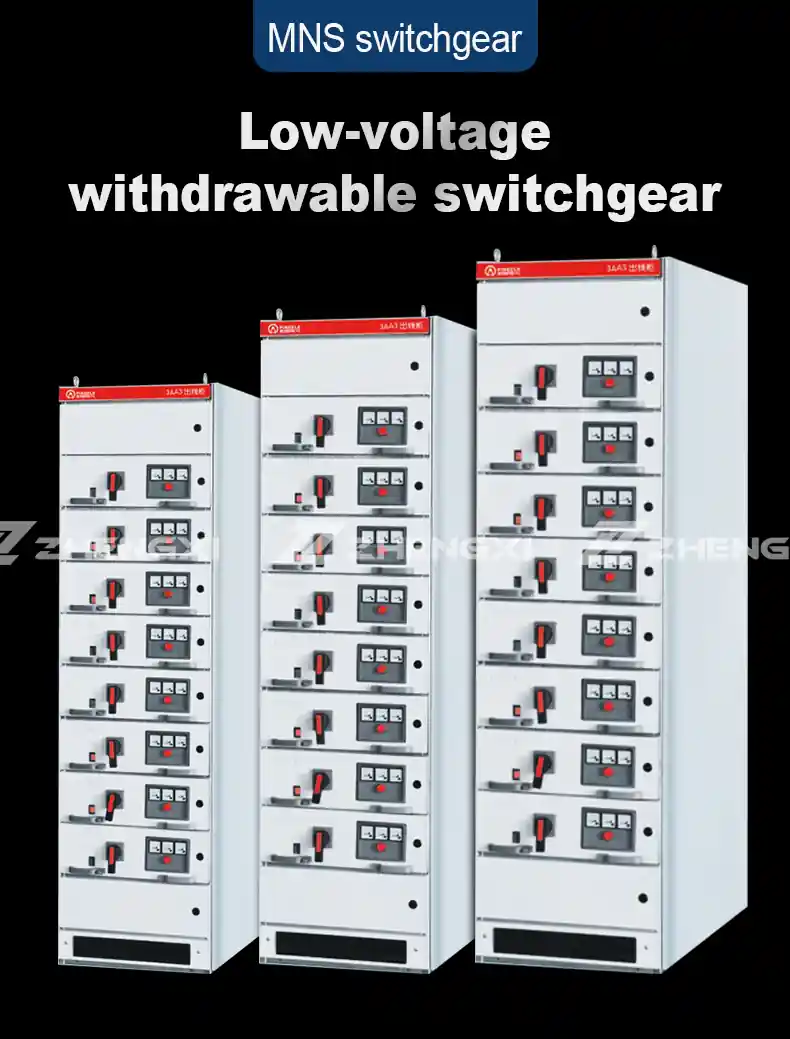
Low Voltage Switchgear
Low Voltage Switchgear is an essential component of modern power distribution systems, designed to safely manage, control, and protect electrical networks operating at voltages up to 1,000V. It is widely used in industrial plants, commercial buildings, residential complexes, and public infrastructure, ensuring reliable power distribution and operational efficiency.
Engineered for high performance and safety, Low Voltage Switchgear integrates circuit breakers, contactors, relays, fuses, and monitoring devices within a compact, modular enclosure. It helps prevent electrical faults, short circuits, and overload conditions, reducing downtime and enhancing the stability of power systems. With advanced protection features, it ensures compliance with international standards such as IEC 61439 and ANSI/NEMA.
One of the key advantages of Low Voltage Switchgear is its flexibility and scalability. It can be customized to accommodate different power requirements, offering solutions for power distribution, motor control, and automation systems. Modern switchgear is often equipped with smart monitoring systems, enabling real-time diagnostics, remote control, and predictive maintenance to improve energy efficiency and reduce operational costs.
With its durable construction and ability to withstand demanding environmental conditions, Low Voltage Switchgear is the preferred choice for critical power applications, including data centers, hospitals, transportation networks, and manufacturing facilities. Its modular design allows for easy expansion and upgrades, making it a future-proof investment for evolving power distribution needs.
Low Voltage Switchgear Voltage Range
Low Voltage Switchgear is designed to operate within voltage levels up to 1,000V AC and 1,500V DC, making it a crucial component in electrical power distribution networks. This voltage range is ideal for industrial, commercial, and residential applications, ensuring safe and efficient power management in low-voltage environments.
The most common voltage ratings for Low Voltage Switchgear include:
- 230V - 400V: Standard voltage levels for commercial buildings, office spaces, and residential complexes. This range is commonly used in lighting systems, HVAC units, and general power distribution.
- 400V - 690V: Suitable for industrial applications, manufacturing plants, and motor control centers (MCCs), providing reliable power for heavy-duty machinery and automation systems.
- 690V - 1,000V: Used in specialized industrial processes, mining operations, and large-scale infrastructure projects where higher voltage distribution is necessary to improve efficiency and reduce power losses.
- Up to 1,500V DC: Mainly applied in renewable energy installations, including solar farms and battery energy storage systems, where direct current (DC) power needs to be efficiently controlled and distributed.
Modern Low Voltage Switchgear is equipped with advanced protective devices, including circuit breakers, fuses, relays, and smart monitoring systems. These features ensure stable voltage regulation, prevent overcurrent faults, and enhance operational safety. Additionally, modular designs allow for scalability, making it easier to expand or upgrade the system as power requirements increase.
By covering a wide range of voltage levels, Low Voltage Switchgear plays a critical role in ensuring stable and efficient power distribution across various industries. Whether for commercial, industrial, or renewable energy applications, it provides a reliable solution to meet modern electrical system demands.
Low Voltage Switchgear
Low Voltage Switchgear is a critical component of modern electrical distribution systems, ensuring safe and efficient power control for industrial, commercial, and residential applications. It plays a vital role in regulating, protecting, and isolating electrical circuits operating at voltages below 1,000V. These systems are designed to handle power distribution, motor control, and lighting management while enhancing electrical safety and operational efficiency.
Function & Working Principle
The primary function of low voltage switchgear is to distribute electrical power safely while protecting equipment and personnel from electrical hazards. It consists of various components such as circuit breakers, contactors, fuses, relays, and busbars, which work together to control and protect the power supply. The working principle is based on the ability to interrupt and isolate faulty circuits, preventing damage to electrical equipment and reducing the risk of fire and electrical shock.
- Power Distribution: Ensures even and controlled distribution of electrical power from transformers to various loads.
- Fault Protection: Detects faults like short circuits, overloads, and ground faults, automatically isolating affected circuits.
- Voltage Regulation: Maintains a stable voltage supply, preventing fluctuations that can damage sensitive equipment.
- System Isolation: Allows for maintenance and repairs without shutting down the entire electrical system.
Key Features of Low Voltage Switchgear
- Advanced Electrical Protection: Low Voltage Switchgear is equipped with high-performance circuit breakers, relays, and fuses, offering exceptional protection against overcurrent, short circuits, and electrical faults. These protective mechanisms minimize downtime, prevent costly damage to electrical systems, and enhance overall safety.
- Flexible Modular Design: This switchgear comes in fixed, withdrawable, and modular configurations, allowing for easy installation and future expansion. Its modular nature makes it ideal for industries that require scalable power distribution solutions, such as factories, hospitals, and data centers.
- Optimized Energy Efficiency: Designed to reduce power losses, low voltage switchgear improves energy utilization, minimizing operational costs. With high-efficiency transformers and optimized busbar arrangements, it ensures lower energy consumption while maintaining stable power output.
- Durable & Long-Lasting Construction: Made from high-quality metal enclosures and insulated components, low voltage switchgear is built to withstand extreme conditions. It offers high resistance to heat, moisture, dust, and corrosive environments, making it suitable for industrial plants, renewable energy stations, and underground facilities.
- Smart Monitoring & Automation: Advanced models integrate with IoT-based systems and SCADA platforms, enabling real-time remote monitoring, fault diagnostics, and predictive maintenance. This ensures faster response to electrical issues, reducing downtime and improving system reliability.
- Versatile Application Areas: Low voltage switchgear is widely used in industrial production lines, commercial buildings, renewable energy grids, and large-scale power distribution networks. It plays a key role in providing stable and controlled electrical power in diverse settings, from hospitals and airports to factories and shopping malls.
- Eco-Friendly & Sustainable Power Management: Modern low voltage switchgear utilizes environmentally friendly materials and energy-efficient components, reducing its carbon footprint. Some models incorporate recyclable insulation and low-emission technologies, making them ideal for organizations focused on sustainability and green energy solutions.
- Seamless Integration with Renewable Energy Systems: Low voltage switchgear is designed to be compatible with solar farms, wind energy plants, and hybrid energy storage systems. It ensures smooth power conversion, fault protection, and voltage regulation, improving the stability of modern smart grids.
- Low Maintenance Requirements: Unlike older switchgear systems, modern low voltage switchgear requires minimal servicing due to its self-diagnostic capabilities, modular structure, and durable electrical components. This reduces maintenance costs and improves operational efficiency.
- Compliance with Global Safety Standards: Low voltage switchgear meets international safety and performance certifications such as IEC 61439, ANSI, NEMA, and GB standards, ensuring reliable operation in electrical distribution networks worldwide.
Technical Specifications
- Rated Voltage: 400V - 1000V
- Rated Frequency: 50/60Hz
- Rated Current: 630A - 6300A
- Short-Circuit Breaking Capacity: Up to 100kA
- Protection Level: IP30 - IP65
- Operating Temperature: -25°C to +55°C
- Installation Type: Indoor & Outdoor
Common Applications of Low Voltage Switchgear
Low voltage switchgear is widely used across multiple industries due to its ability to manage and protect power distribution networks efficiently. Some of the most common applications include:
- Industrial Facilities: Used in factories, manufacturing plants, and refineries to control and distribute electricity safely.
- Commercial Buildings: Essential for office complexes, shopping malls, and data centers to ensure a stable power supply.
- Renewable Energy Systems: Integrates with solar and wind power generation to facilitate efficient energy distribution.
- Data Centers: Supports continuous power supply and redundancy systems to prevent downtime.
- Hospitals & Healthcare Facilities: Provides reliable power to medical equipment and emergency systems.
- Transportation Infrastructure: Used in railway stations, airports, and metro systems to ensure efficient power management.
Types of Low Voltage Switchgear
Depending on application requirements, low voltage switchgear can be categorized into different types, including:
- Fixed Type Switchgear: Suitable for applications where frequent maintenance and modifications are not required.
- Withdrawable Type Switchgear: Allows for quick and easy replacement of components without shutting down the entire system.
- Modular Switchgear: Designed for easy scalability and expansion, making it ideal for growing electrical networks.
- Intelligent Switchgear: Equipped with advanced automation features for remote monitoring and real-time diagnostics.
Advantages of Low Voltage Switchgear
- Safety & Protection: Provides a high level of safety by preventing electrical hazards and ensuring uninterrupted power supply.
- Efficient Power Management: Optimizes energy consumption, reducing operational costs and enhancing system performance.
- Customizable Solutions: Can be tailored to specific requirements, including voltage levels, control methods, and environmental conditions.
- Long Service Life: Designed for durability, ensuring reliable operation with minimal maintenance.
- Scalability: Modular configurations enable easy expansion and upgrades as power demands grow.
Maintenance & Troubleshooting
Proper maintenance of low voltage switchgear is crucial to ensure its longevity and reliable performance. Key maintenance practices include:
- Routine Inspections: Regularly checking for wear, loose connections, and overheating components.
- Cleaning & Dust Removal: Keeping internal and external parts free from dust and debris to maintain proper airflow.
- Testing & Calibration: Periodic testing of relays, circuit breakers, and protective devices to ensure proper functionality.
- Component Replacement: Prompt replacement of damaged or aged components to avoid system failures.
Future Trends in Low Voltage Switchgear
With advancements in smart technology, low voltage switchgear is evolving to include more automation and energy-efficient features. Some emerging trends include:
- Integration with Smart Grids: Enabling real-time power monitoring and automated fault detection.
- Eco-Friendly Materials: Use of sustainable and recyclable components to reduce environmental impact.
- Enhanced Cybersecurity: Protection against digital threats in smart power networks.
- Remote Operation & Monitoring: Advanced IoT-based solutions for predictive maintenance and system optimization.
With its advanced functionality, robust design, and flexible configurations, Low Voltage Switchgear is a crucial element in modern electrical systems, providing reliable and efficient power distribution for a wide range of applications.
